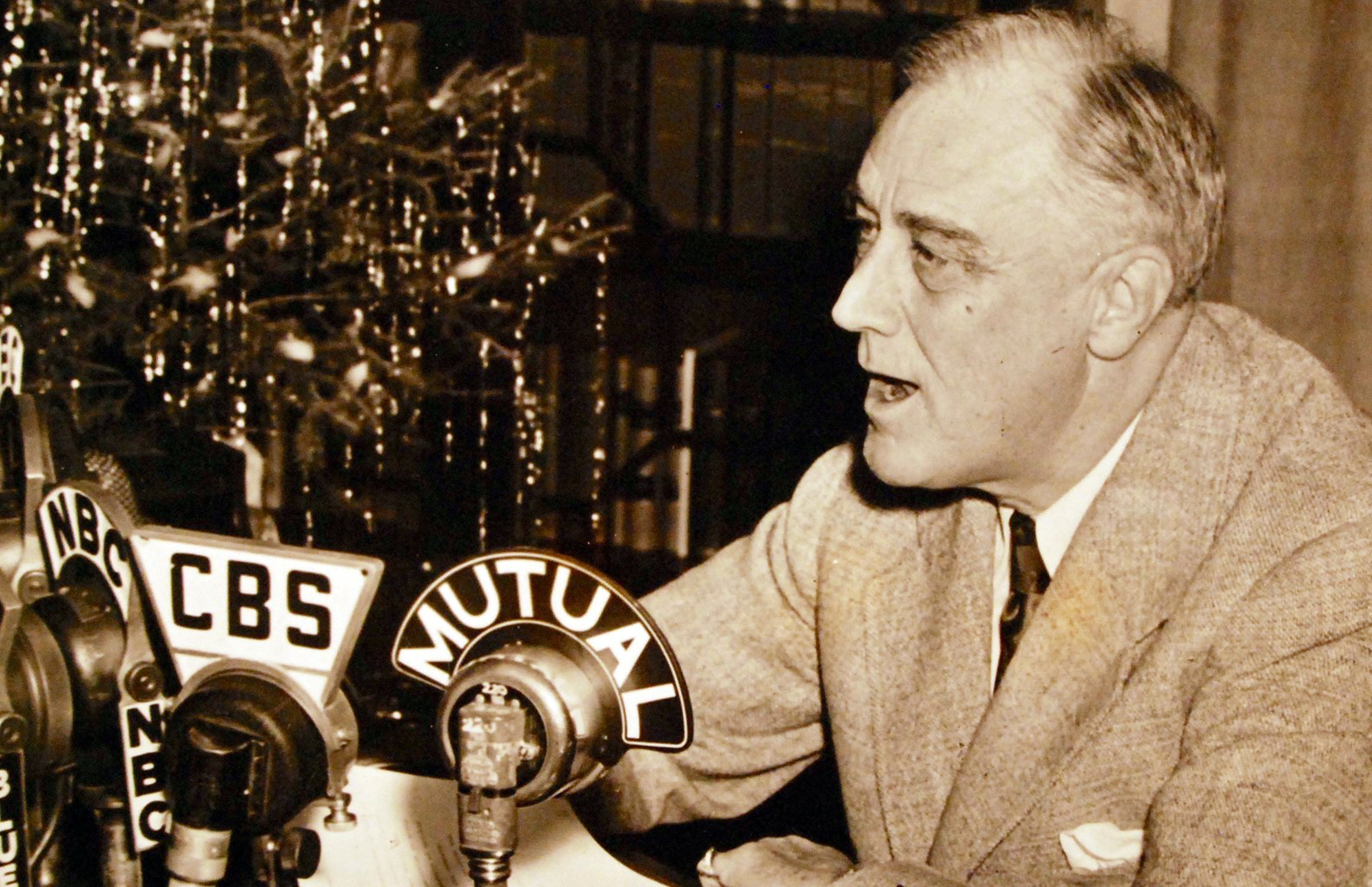
Credit: National Museum of the U.S. Navy, public domain, via Wikimedia Commons
Background
Synopsis: Broadcast radio is celebrating its 105th anniversary this year and this is National Radio Week in the U.S. Although many other forms of communication are now in use, radio serves as the foundation for global communication and remains a vital means of communication across the globe.
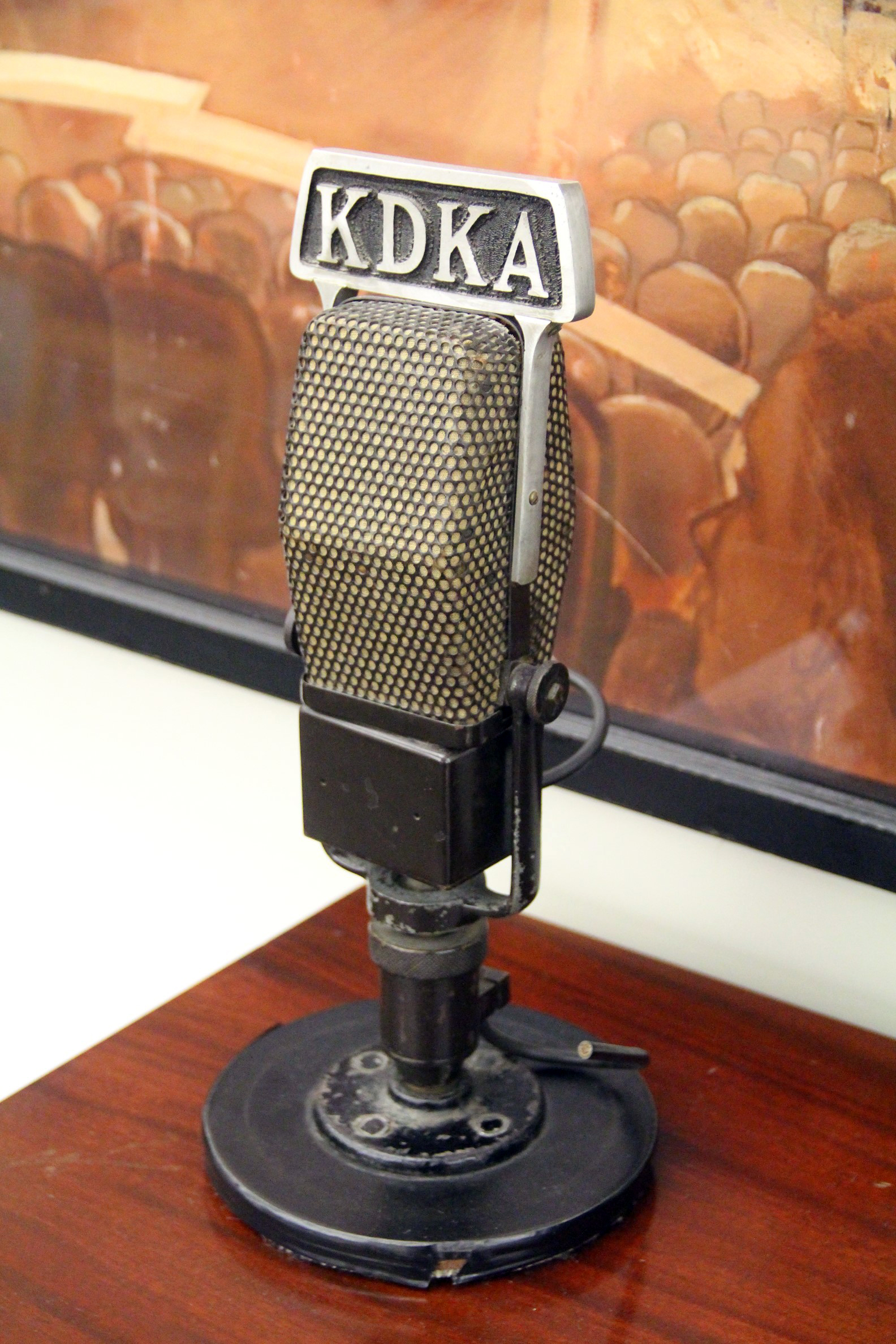
Credit: Fourandsixty, CC BY-SA 4.0, via Wikimedia Commons
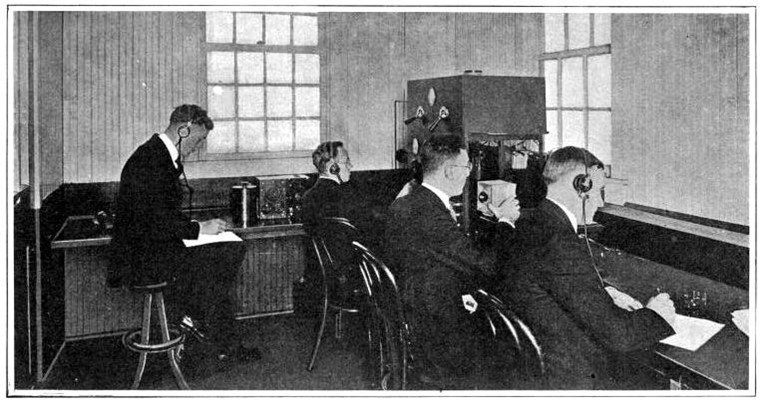
Credit: Austin C. Lescarboura, public domain, via Wikimedia Commons
- The Dawn of Commercial Broadcasting
- August 20, 1920, is the date that WWJ, originally known as 8MK went on the air in Detroit, Michigan. The signal could transmit roughly 100 miles to an audience of about 300 amateur radio operators. The radio station was started by the Scripps family, founders of the Detroit News and would later become the RCA and NBC broadcasting icons.
- Many others, however, credit KDKA, located in Pittsburgh, Pennsylvania as being the first commercial radio station. Approached by radio manufacturer Westinghouse, local ham radio operator Dr. Frank Conrad was asked to set up a regularly transmission across the city, extending his occasional broadcast of records to his friends.
- On election day, November 2,1920, people in the Pittsburgh area tuned in to hear the results of the Hardy – Cox presidential race.
- Within four years, there were 600 radio stations across the country and in 1922 listeners had the pleasure of hearing the first radio commercial, an ad for a New York City real-estate developer.
- The Golden Age of Radio and Technological Evolution
- The Radio Act of 1927 created the Federal Radio Commission, later becoming the Federal Communications Commission (FCC) to oversee the burgeoning industry.
- The FCC is responsible for the management and licensing of the electromagnetic spectrum. An application is submitted, and a radio station is then assigned a particular frequency on which to broadcast. For example,
- KRBD in Ketchikan, Alaska can be found when a radio is tuned to 105. 3 MHz (megahertz)
- AM station KSST in San Antonio, Texas is located at 1230 kHz (kilohertz),
- World FM operates at 88.2 MHz from the Tasman region of New Zealand.
- The FCC oversees all types of radio communication:
- The largest radio wavelengths from 1 – 100 km, are used for maritime communication and navigation.
- Those in the middle, from 1 – 1000 m, are used for aviation navigation, short-wave radio, and AM and FM radio.
- The smallest radio waves, less than 1 m, are used for cell phones, WIFI, and radio astronomy.
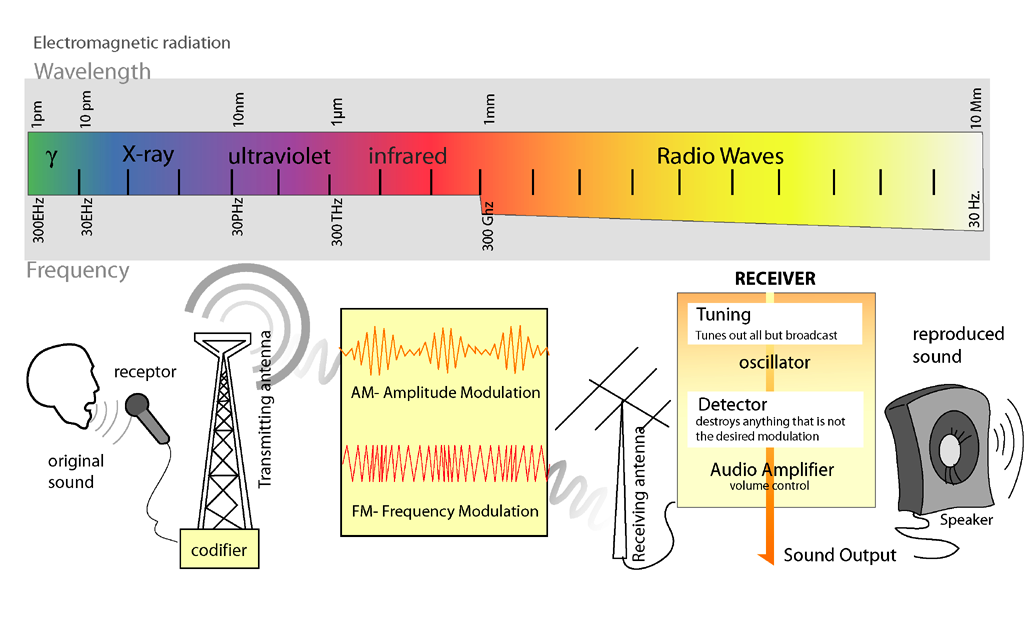
Radio waves have the largest wavelengths, up to 10 megameters (or 10,000,000 meters) and the smallest frequency of the waves in the electromagnetic spectrum.
Credit: LadyofHats, public domain, via Wikimedia Commons
- Other important dates in radio history include:
- National broadcasting events, such as the 1927 Rose Bowl and the 1938 World Series demonstrated radio's ability to unify and entertain audiences on a large scale.
- Unifying the country through challenging times, President Franklin D. Roosevelt delivered his fireside chats via radio, guiding Americans through the Great Depression and World War II.
- The Telstar 1 Satellite was launched into orbit in 1962. The communication satellite allowed radio signals to be relayed across the curved surface of Earth.
- In 1967, the Corporation of Public Broadcasting was created when President Lyndon Johnson signed the Public Broadcasting Act.
- Millions of Americans tuned into their radios in June of 1969 to hear Astronaut Neil Armstrong land on the moon and say, “That’s one small step for man, one giant leap for mankind.”
- In 2001 and 2002, XM and Sirius Satellite radio began.
- The Birth and Science of Radio
- James Clerk Maxwell was a Scottish mathematician and physicist who was the first to establish a relationship between electric and magnetic fields and light. His 1865 paper, A Dynamical Theory of the Electromagnetic Field was the first to describe how varying electric and magnetic fields interact, have wave behavior, and would travel through space at the speed of light.
- His equations, known today as Maxwell’s equations, laid the theoretical groundwork for the discovery and use of radio waves.
- The German physicist, Heinrich Hertz was intrigued and sought to verify Maxwell’s work. He devised an experiment in which a spark gap was attached to an induction coil. A distance from this was an antenna outfitted with a similar spark gap. When he created a spark with the induction coil, he observed that it traveled to the other spark gap in the form of a wave.
- With this, he generated the first radio wave, conclusively validating Maxwell’s theory and pioneering the practical exploration of this new form of energy.
- To honor his contributions, the unit of wave frequency, the Hertz, bears his name.

A diagram of the classic spark-gap transmitter first designed by Heinrich Hertz. This diagram is from a 1917 boy’s handcrafts book, encouraging young engineers.
Credit: Ernest Thompson Seton, public domain, via Wikimedia Commons
- Transforming Theory into Practice – Pioneers of Radio Technology
- The Italian inventor Guglielmo Marconi stands out as a key figure who transitioned radio waves from theoretical curiosity to practical communication tool.
- He began by transmitting signals in Morse code across his property and patented his technology in 1896. He then went on to raise funding to commercialize the product.
- Marconi then surprised the world in 1899 when he gave updates via Morse code of the America’s Cup Yacht races from a ship in the Atlantic to a land-based station in New York.
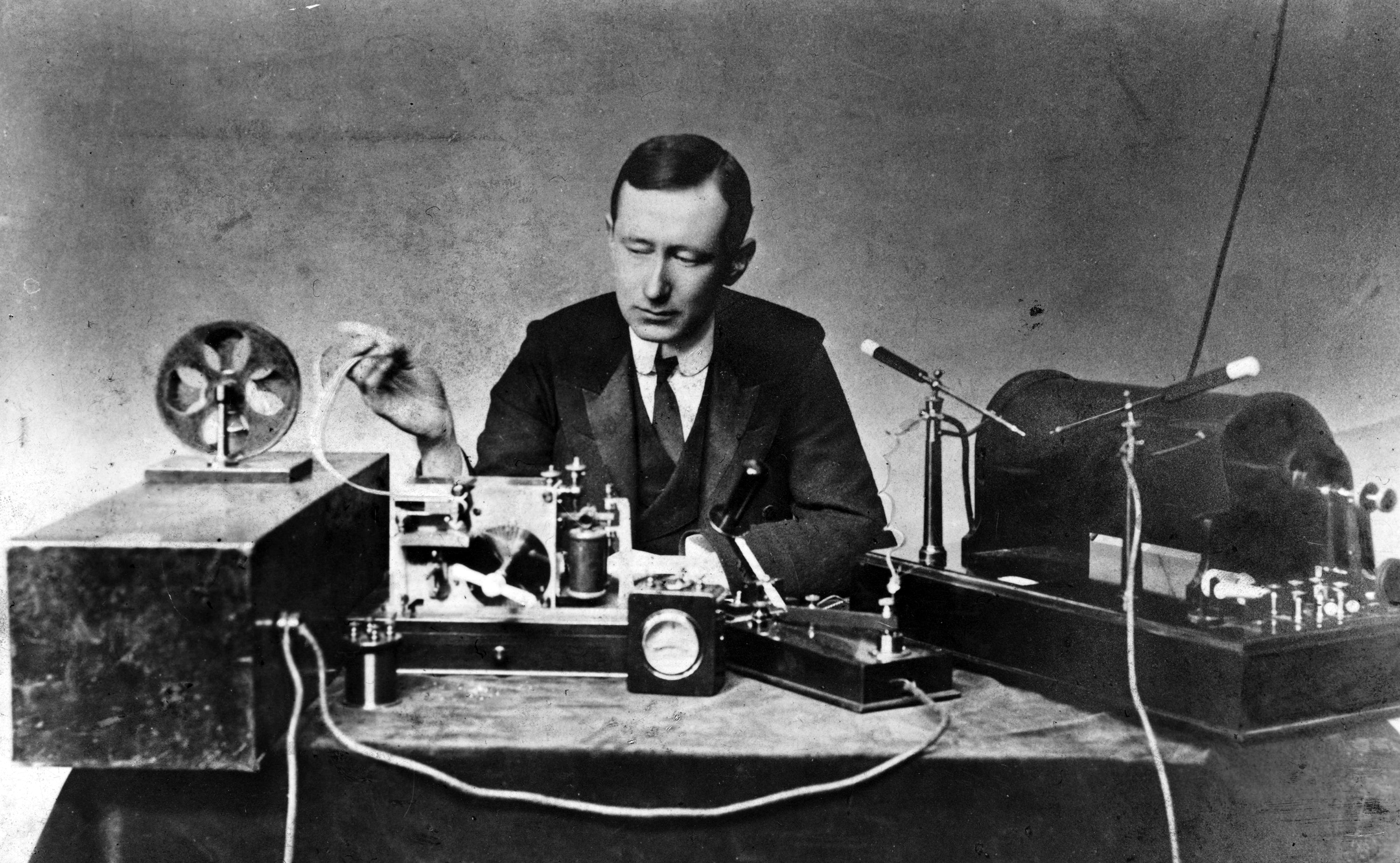
Engineer and inventor Guglielmo Marconi demonstrates his spark-gap transmitter, used in his first long distance radio transmissions during the 1890s.
Credit: LIFE Photo Archive, public domain, via Wikimedia Commons
- While Marconi gained global recognition, the Russian Aleksandr Popov was the first to demonstrate that radio waves could transmit the Morse code signals. His work, however, lacked the international acclaim and commercialization of Marconi’s efforts.
- Russia honors Popov’s legacy with National Radio Day each May.
- A huge leap in broadcasting occurred on Christmas Eve 1906 when Canadian-born physicist Reginald Fessenden sent a transmission of human voice and music from his station in Massachusetts.
- Fessenden had worked as an assistant in Einstein’s lab and in 1893 was recruited by George Westinghouse to run the Electrical Engineering department at the Western University in Pennsylvania, now the University of Pittsburgh.
- During this time Fessenden improved on the spark-gap design for radio transmission and developed a more efficient rotary spark-gap design.
- In later work, he developed a system of sending signals that relied on alternating current, what is now known as a continuous-wave (CW) transmitter, one that produced tens of thousands of wave cycles per second, or kilohertz.
- In December of 1906, Fessenden demonstrated the first successful transmission of audio voice and sound. Although some accounts vary, most researchers report that Fessenden himself gave a brief introduction, played a recording of Handel’s Largo on an Edison Electrophone, played O Holy Night using his own violin, and even singing the last verse.
- Improvements in the technology occurred quickly over the years, amplifying the signal, creating circuits to improve processing the signals, and broadcasting in FM or frequency modulation.
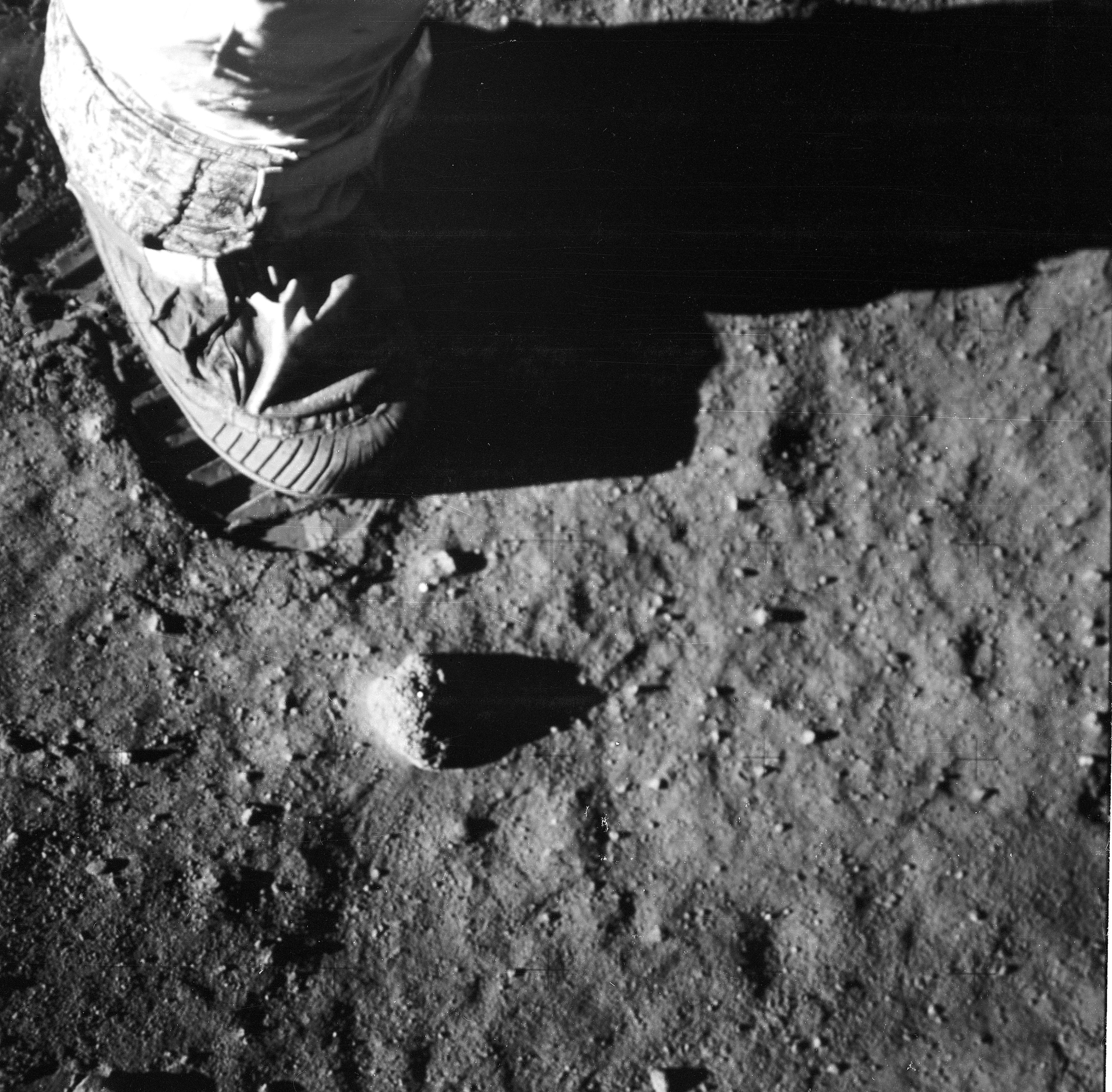
Millions listened on the radio as Neil Armstrong set foot on the moon.
Credit: NASA Johnson Space Center, public domain, via Wikimedia Commons
- The Italian inventor Guglielmo Marconi stands out as a key figure who transitioned radio waves from theoretical curiosity to practical communication tool.
- Radio’s Timeless Appeal and Modern Adaptation.
- Today there are over 15,000 radio stations in the United States and over 44,000 across the world. Most stations have also been able to embrace changes in the industry by providing streaming services that can reach a global audience.
- Although radio is one of the oldest forms of media, its audience has remained stable over the last decade while the paid television audience has dropped by 20%.
- Each week, 92% of Americans tune in to listen to radio.
- Radio remains popular across age groups. In the U.S., 55% of Gen Z listen to AM/FM radio daily.
- Adults listen to radio an average of 104 minutes per day.
- By 2029, the number of radio listeners is expected to reach 3.2 billion.
- Argentinians listen to more radio than any other country with an average of 20.8 hours per week.
- Even with the other media options available today, radio commands 41% of audience listening time, outpacing podcasts and streaming audio.
- Some of the main reasons people site for the continued attraction to radio is the connection to the local community and the appeal of a favorite radio personality.
- April of 2017 was the first broadcast of Earth Date, now reaching over 460 radio stations in all 50 states and across the globe.
- Let’s celebrate National Radio Day.
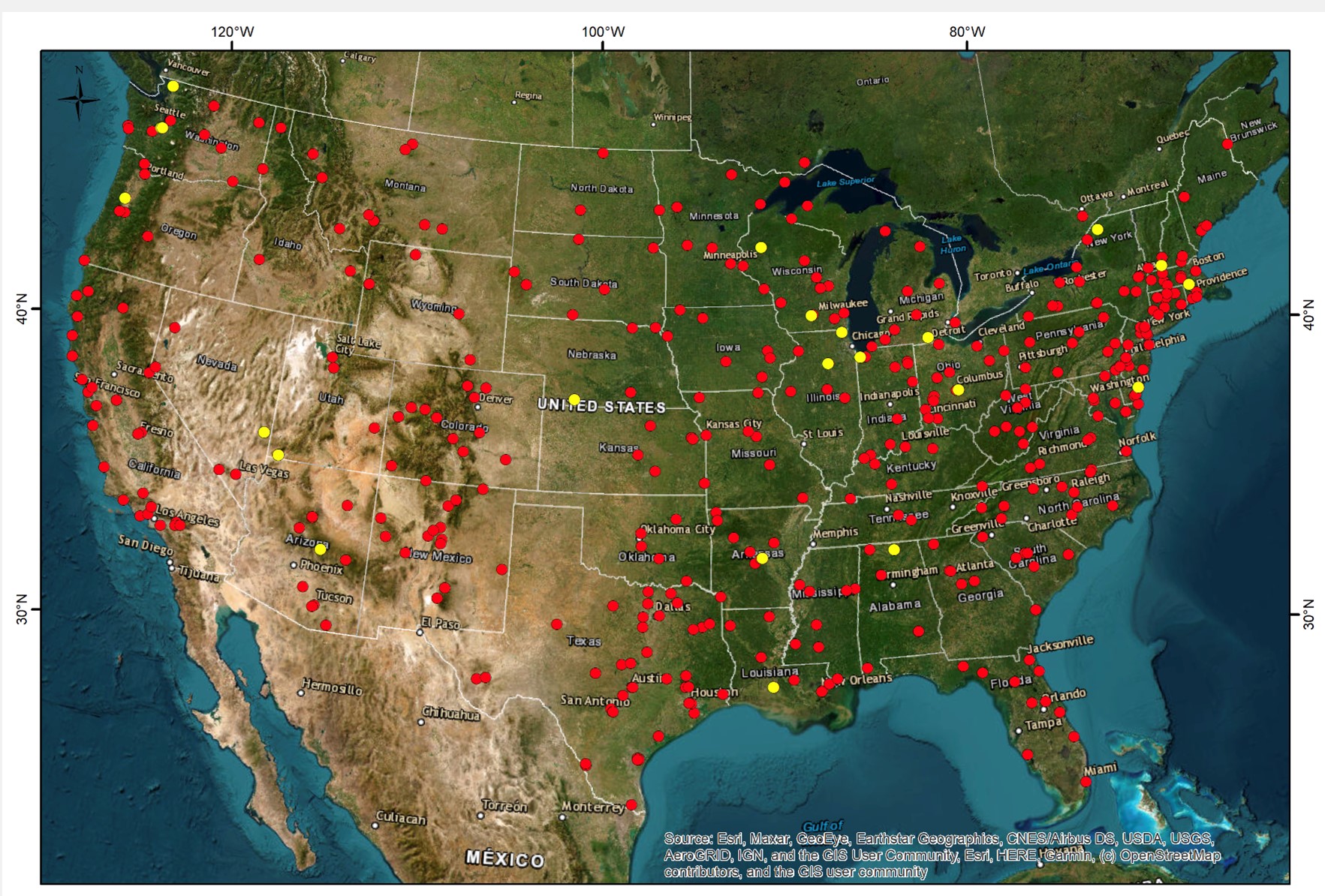
You can listen to EarthDate on over 460 radio stations in the U.S. including many stations in Alaska and Hawaii and internationally in the United Kingdom, Canada, the Philippines, and New Zealand.
Credit: Earthdate.org
Episode scripts
A million Americans listen to this show each week. Some at Earthdate.org. But the huge majority on the radio.
That’s because, in our increasingly online world, radio is still the leading way people consume media.
It began when an engineer named Reginald Fessenden improved on early transmitters to create a continuous stream of radio waves.
In 1906, he made the first broadcast, of himself playing the violin and singing – a one-man talent show … that almost no one had a receiver to hear.
That quickly changed.
In 1920, the first commercial station went on air in Detroit. Within four years there were 600 stations across the country, as sales of home radios boomed.
In 1927, the government created the FCC to parcel out different wavelengths to radio stations.
In the 100 years since, those grew to 15,000 stations in the US, among 44,000 worldwide, delivering some famous radio moments that united us all.
FDR guided America through the Depression with his radio fireside chats. Rock and roll was born, largely as a radio phenomenon. Millions listened to Neil Armstrong’s first words from the moon.
Today, 92% of Americans listen to radio weekly. Worldwide, people average 104 minutes a day! And you just enjoyed two of them.

